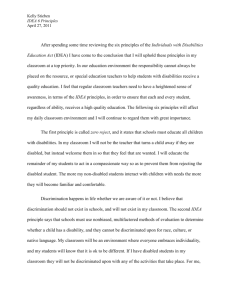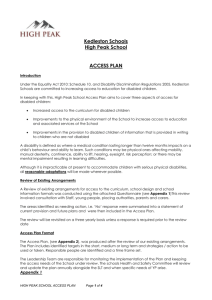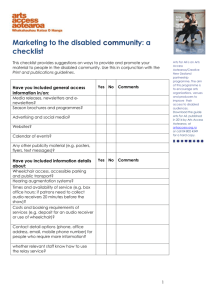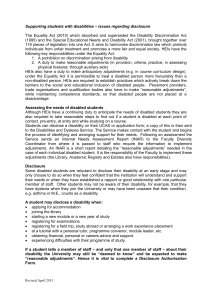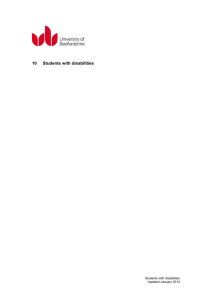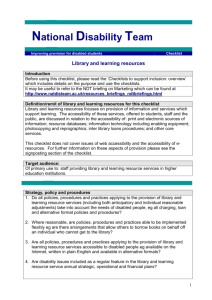3.-Code-of-practice - University of Bradford
advertisement
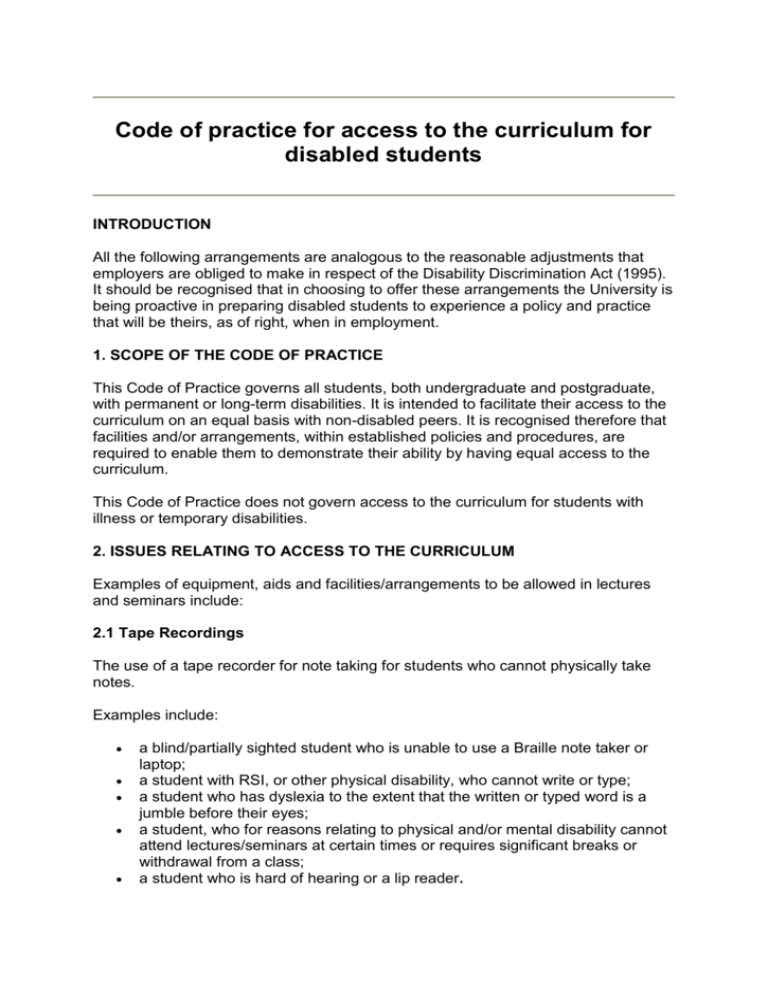
Code of practice for access to the curriculum for disabled students INTRODUCTION All the following arrangements are analogous to the reasonable adjustments that employers are obliged to make in respect of the Disability Discrimination Act (1995). It should be recognised that in choosing to offer these arrangements the University is being proactive in preparing disabled students to experience a policy and practice that will be theirs, as of right, when in employment. 1. SCOPE OF THE CODE OF PRACTICE This Code of Practice governs all students, both undergraduate and postgraduate, with permanent or long-term disabilities. It is intended to facilitate their access to the curriculum on an equal basis with non-disabled peers. It is recognised therefore that facilities and/or arrangements, within established policies and procedures, are required to enable them to demonstrate their ability by having equal access to the curriculum. This Code of Practice does not govern access to the curriculum for students with illness or temporary disabilities. 2. ISSUES RELATING TO ACCESS TO THE CURRICULUM Examples of equipment, aids and facilities/arrangements to be allowed in lectures and seminars include: 2.1 Tape Recordings The use of a tape recorder for note taking for students who cannot physically take notes. Examples include: a blind/partially sighted student who is unable to use a Braille note taker or laptop; a student with RSI, or other physical disability, who cannot write or type; a student who has dyslexia to the extent that the written or typed word is a jumble before their eyes; a student, who for reasons relating to physical and/or mental disability cannot attend lectures/seminars at certain times or requires significant breaks or withdrawal from a class; a student who is hard of hearing or a lip reader. These tapes should be wiped at the end of each semester, if the lecturer concerned deems this necessary. If the student needs to keep them for future reference they should agree not to make them available to any other students. 2.2 Overheads There are a number of situations in which students with specific disabilities will not be able to take notes from overheads at the same speed expected of non disabled students. Examples include: students who are partially sighted and literally cannot see the detail in the overhead; students who have dyslexia to the extent that they cannot process information at the speed required; students who are physically disabled to the extent that they write slowly or may need to use an amanuensis; students who are deaf/hard of hearing and need to lipread at the same time as the overhead is on or may need to watch a BSL interpreter whilst the lecturer is speaking about the overhead. In such instances departments should make arrangements to supply copies of overheads to disabled students who require them before the lecture begins. 2.3 Lecture Notes Where lecture notes are provided, alternative formats should be made available where necessary before the lecture begins. 2.4 Duration of Practicals In the event of a lengthy practical, some disabled students may need to have a significant break or to withdraw from the session. In such cases, arrangements should be made for the practical to reconvene at a convenient time for the tutor/technician and the student. 3. FINANCIAL IMPLICATIONS For full-time undergraduates with disabilities many of the extra costs relating to study can be covered by the Disabled Students Allowance. From the academic year beginning 1998 all full-time undergraduates are eligible to apply for this allowance, which has grants to cover the cost of equipment such as computers and tape recorders and non-medical assistance such as note takers and readers. The Disability Office can work with disabled undergraduates to produce the documentation required by those eligible to apply for this allowance.

